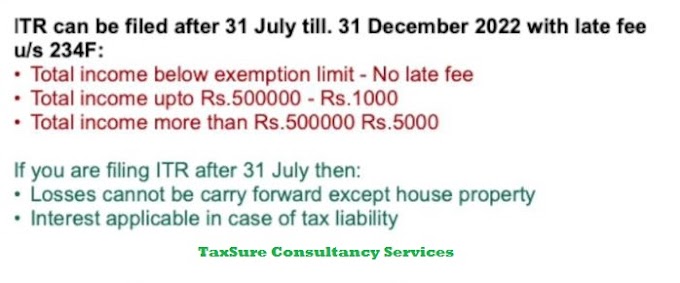
CBDT/ Income Tax Deptt. has so far issued Instructions for filing of New ITR Forms (ITR 1 Sahaj, ITR 2, ITR 3, ITR 4 Sugam, ITR 5 and ITR 6) in respect of FY 2018-19/ AY 2019-20 (download pdf). Instructions for ITR 3, 5 $ 6 also includes list of revised business codes applicable for FY 2018-19/ AY 2019-20.
It may be noted that these instructions are guidelines for filling the particulars in the applicable ITR Form. In case of any doubt, please refer to relevant provisions of the Income-tax Act, 1961 and the Income-tax Rules, 1962.
Instructions For Filing ITR (FY 2018-19/ AY 2019-20)
1. ITR 1 Sahaj Instructions:
Form ITR 1 Sahaj is to be used by an individual who is a resident other than not ordinarily resident, whose total income for the assessment year 2019-20 does not exceed Rs. 50 lakh and who has income under the following heads:-
(a) Income from Salary/ Pension; or
(b) Income from One House Property; or
(c) Income from Other Sources.
NOTE: Further, in a case where the income of another person like spouse, minor child, etc. is to be clubbed with the income of the assessee, this Return Form can be used only if the income being clubbed falls into the above income categories.
2. ITR 2 Instructions:
Form ITR 2 is to be used by an individual or a Hindu Undivided Family (HUF) who is not eligible to file Form ITR-1 (Sahaj) and who is not having any income under the head ‘Profits or gains of business or profession’.
Form ITR 2 should not be used by an individual whose total income for the Assessment Year 2019-20 includes Income under the head ‘Profits or Gains of Business or Profession’.
3. ITR 3 Instructions:
Form ITR 3 is to be used by an individual or a Hindu Undivided Family who is having income under the head ‘Profits or gains of business or profession’ and who is not eligible to file Form ITR-1 (Sahaj), ITR-2 or ITR-4 (Sugam).
However, in a case where accounts are required to be audited u/s 44AB, it is mandatory to verify the ITR 3 electronically under digital signature. In case an assessee is required to furnish a report of audit under sections 10AA, 44AB, 44DA, 50B, 80 -IA, 80-IB, 80-IC, 80-ID, 80JJAA, 80LA, 92E, 115JB or 115JC, he shall file such report electronically on or before the date of filing the ITR 3.
4. ITR 4 Sugam Instructions:
Form ITR 4 Sugam is to be used by an individual or HUF, who is resident other than not ordinarily resident, or a Firm (other than LLP) which is a resident, whose total income for the assessment year 2019-20 does not exceed Rs. 50 lakh and who has income under the following heads:-
(a) Income from business where such income is computed on presumptive basis under Section 44AD (i.e. Gross Turnover upto Rs. 2 crore) or Section 44AE (income from goods carriage upto ten vehicles); or
(b) Income from Profession where such income is computed on presumptive basis under Section 44ADA (i.e. Gross receipt upto Rs. 50 lakh); or
(c) Income from Salary/ Pension; or
(d) Income from One House Property; or
(e) Income from Other Sources.
Note 1: The income computed on presumptive basis under sections 44AD or 44AE or 44ADA shall be presumed to have been computed after giving full effect to every loss, allowance, depreciation or deduction under the Income-tax Act.
Note 2: Further, in a case where the income of another person like spouse, minor child, etc. is to be clubbed with the income of the assessee, this Return Form can be used only if the income being clubbed falls into the above income categories.
5. ITR 5 Instructions:
Form ITR 5 can be used by a person being a firm, Limited Liability Partnership (LLP), Association of Persons (AOP), Body of Individuals (BOI), Artificial Juridical Person (AJP) referred to in clause (vii) of section 2(31), local authority referred to in clause (vi) of section 2(31), representative assessee referred to in section 160(1)(iii) or (iv), cooperative society, society registered under Societies Registration Act, 1860 or under any other law of any State, trust other than trusts eligible to file Form ITR-7, estate of deceased person, estate of an insolvent, business trust referred to in section 139(4E) and investments fund referred to in section 139(4F). However, a person who is required to file the return of income under section 139(4A) or 139(4B) or 139(4D) shall not use this form.
6. ITR 6 Instructions:
This Return Form can be used by a company other than a company which is required to file return in Form ITR-7.




0 Comments